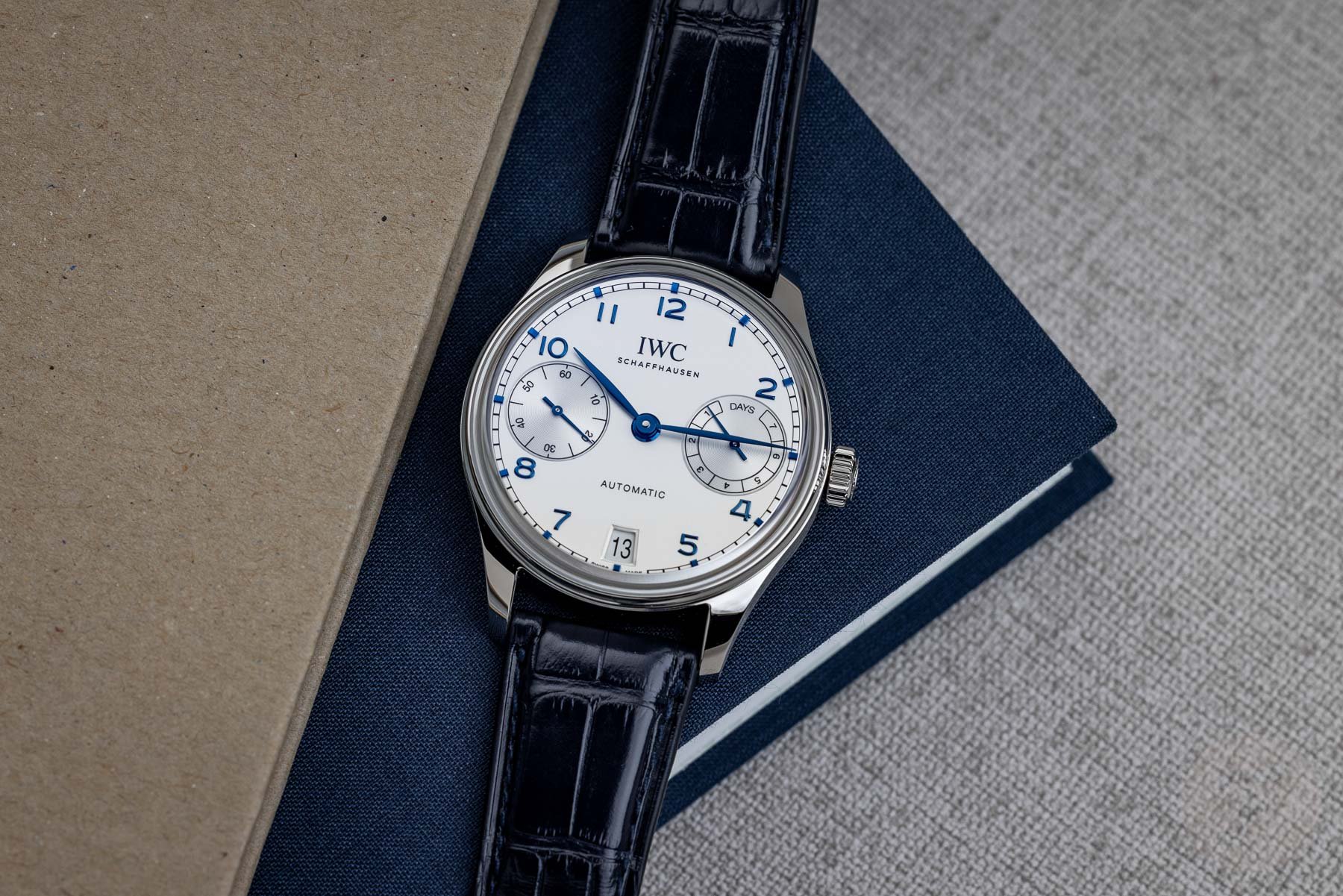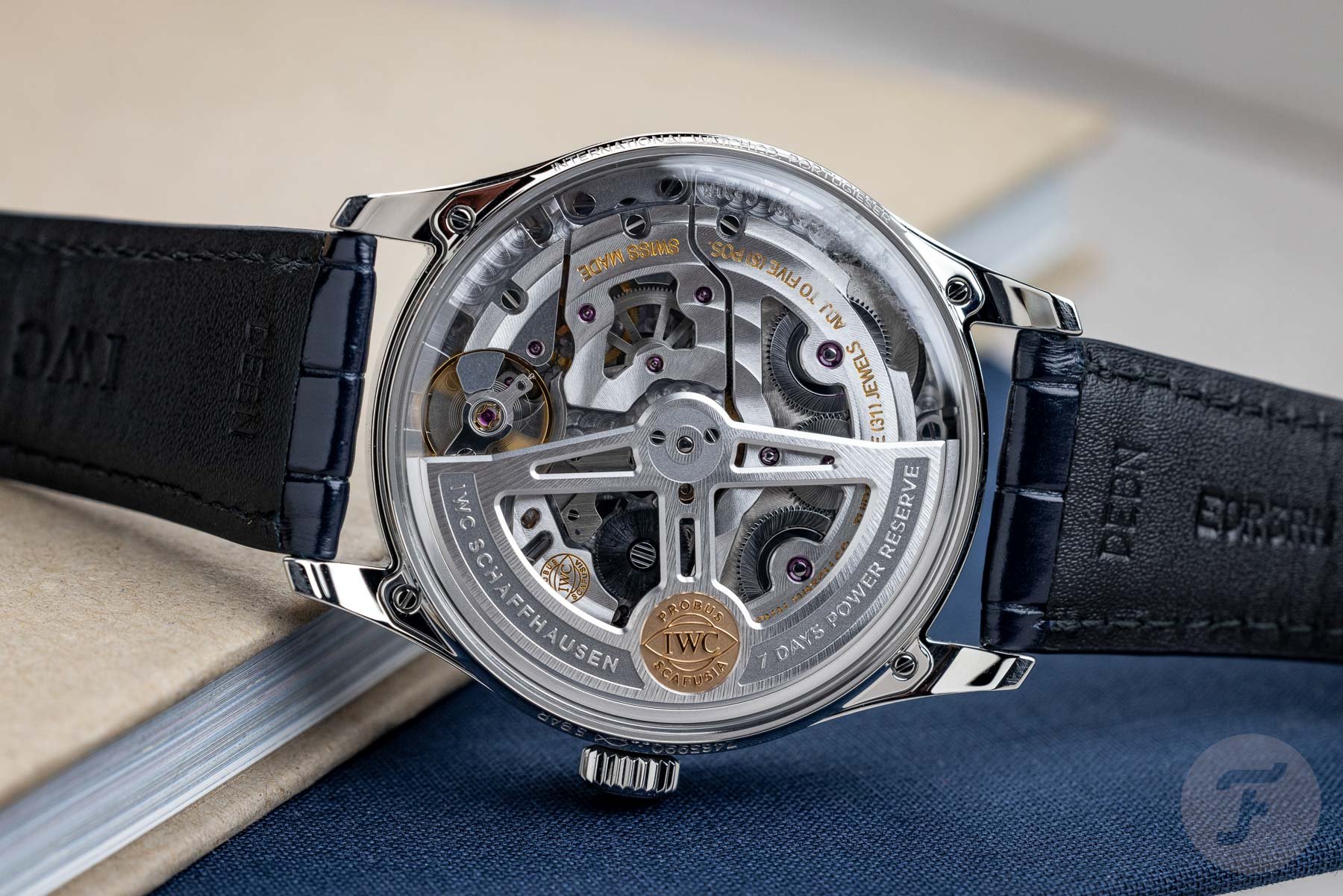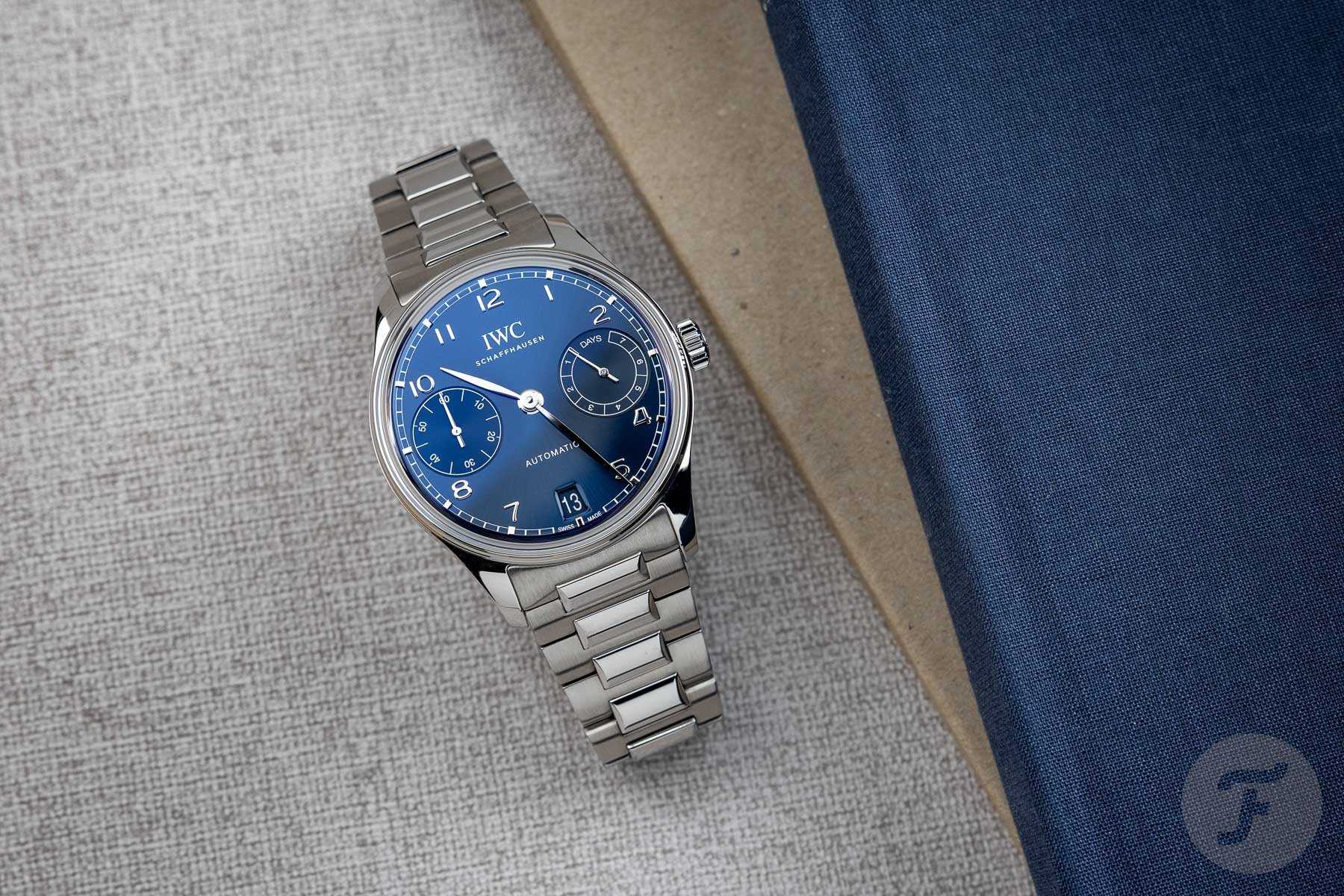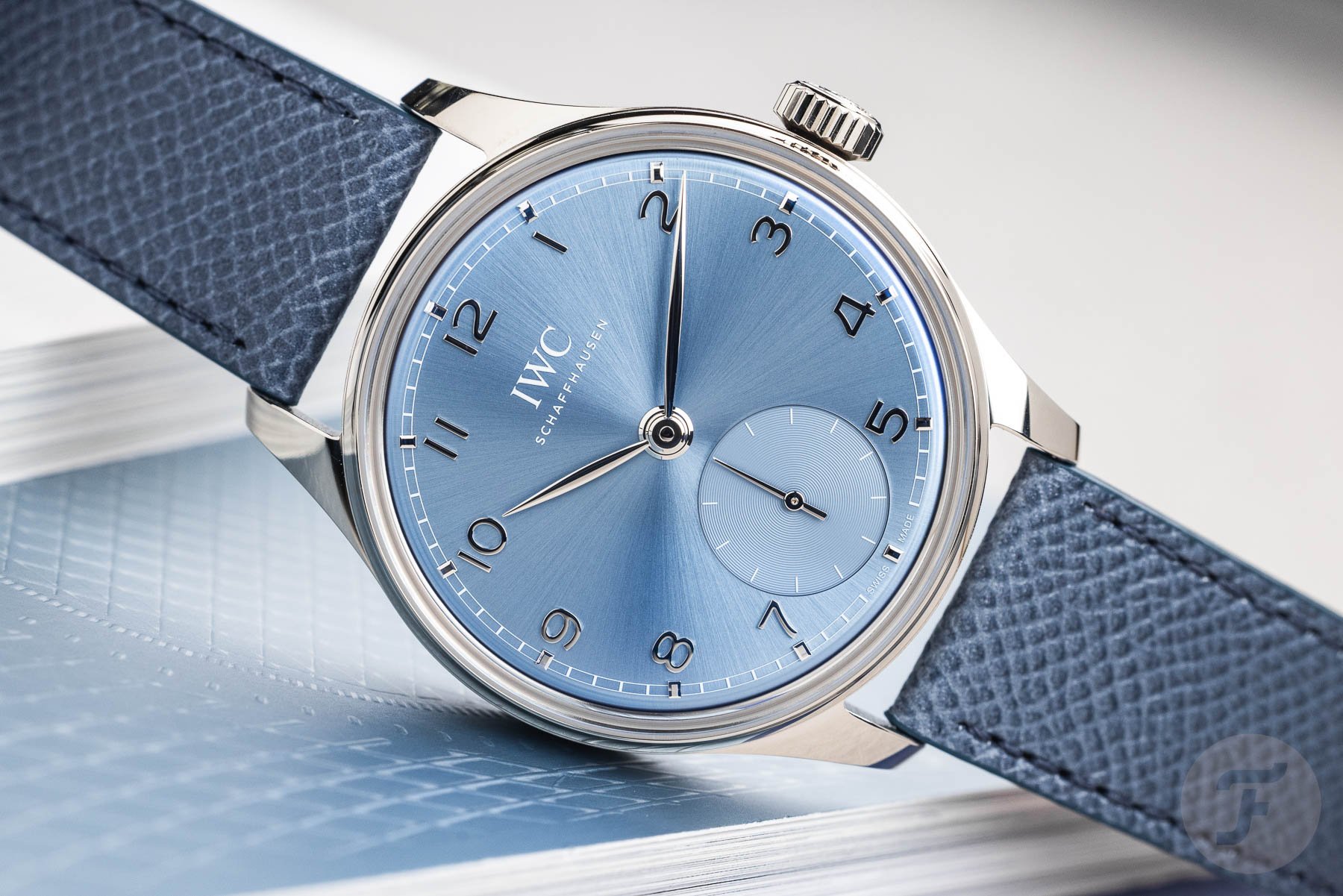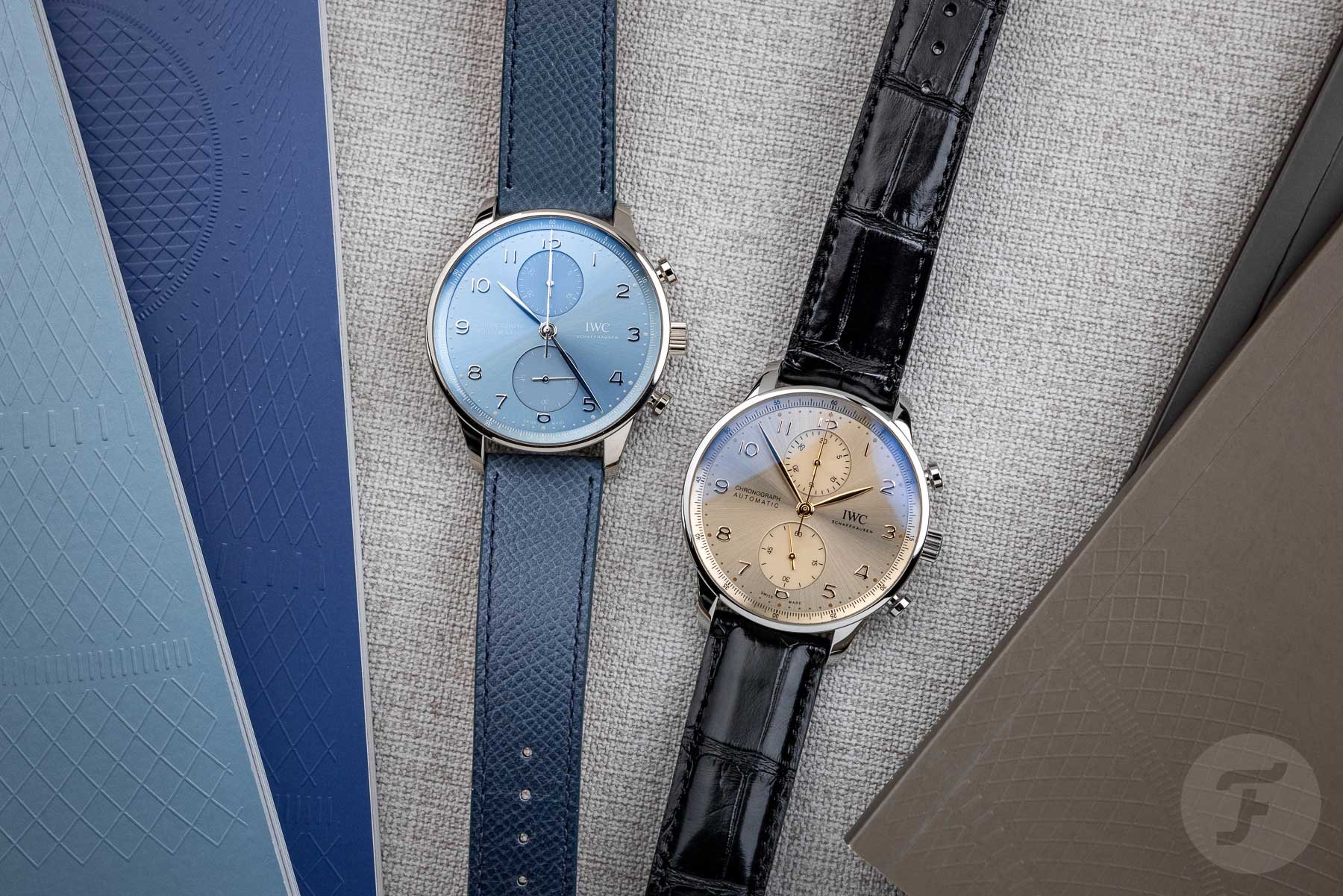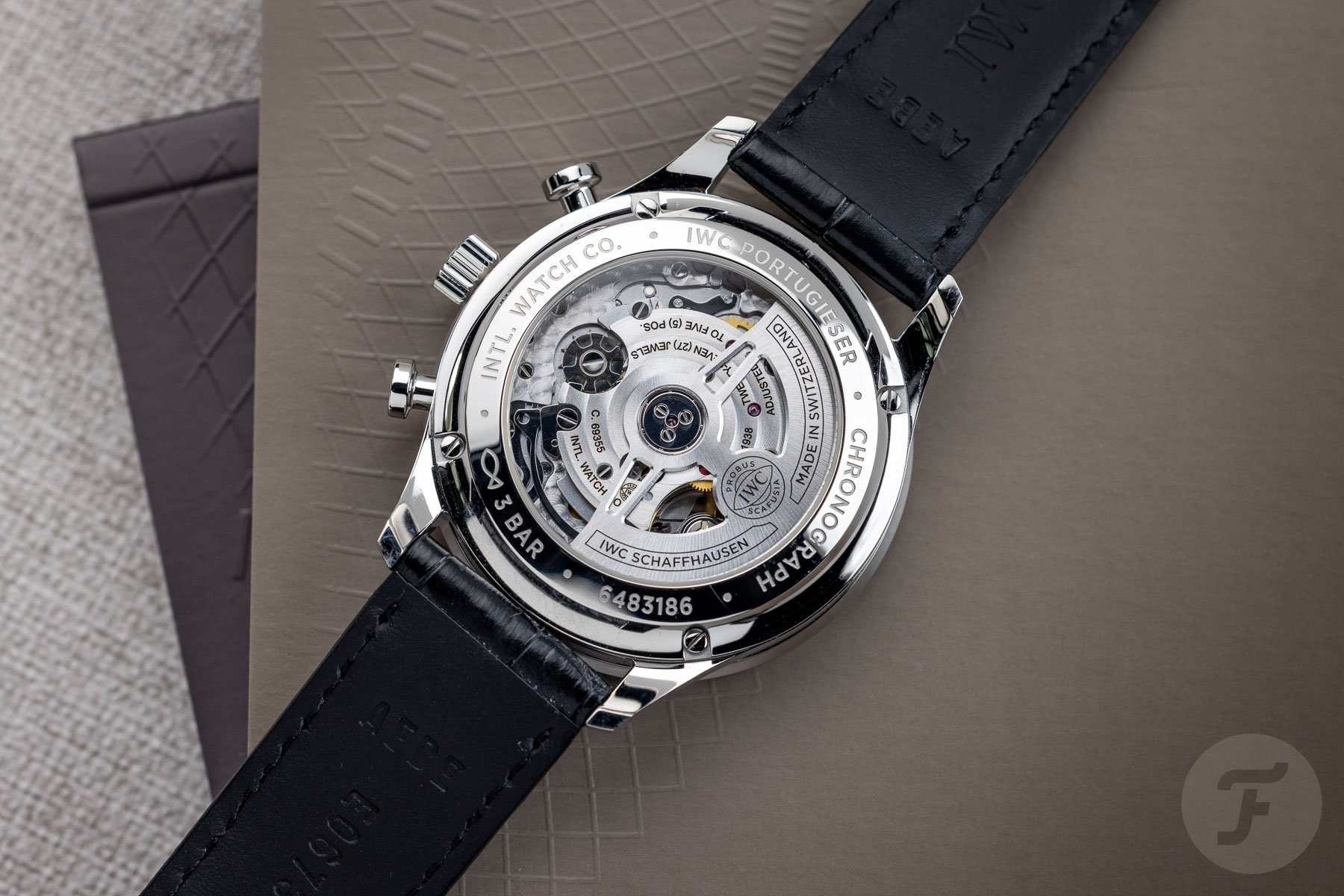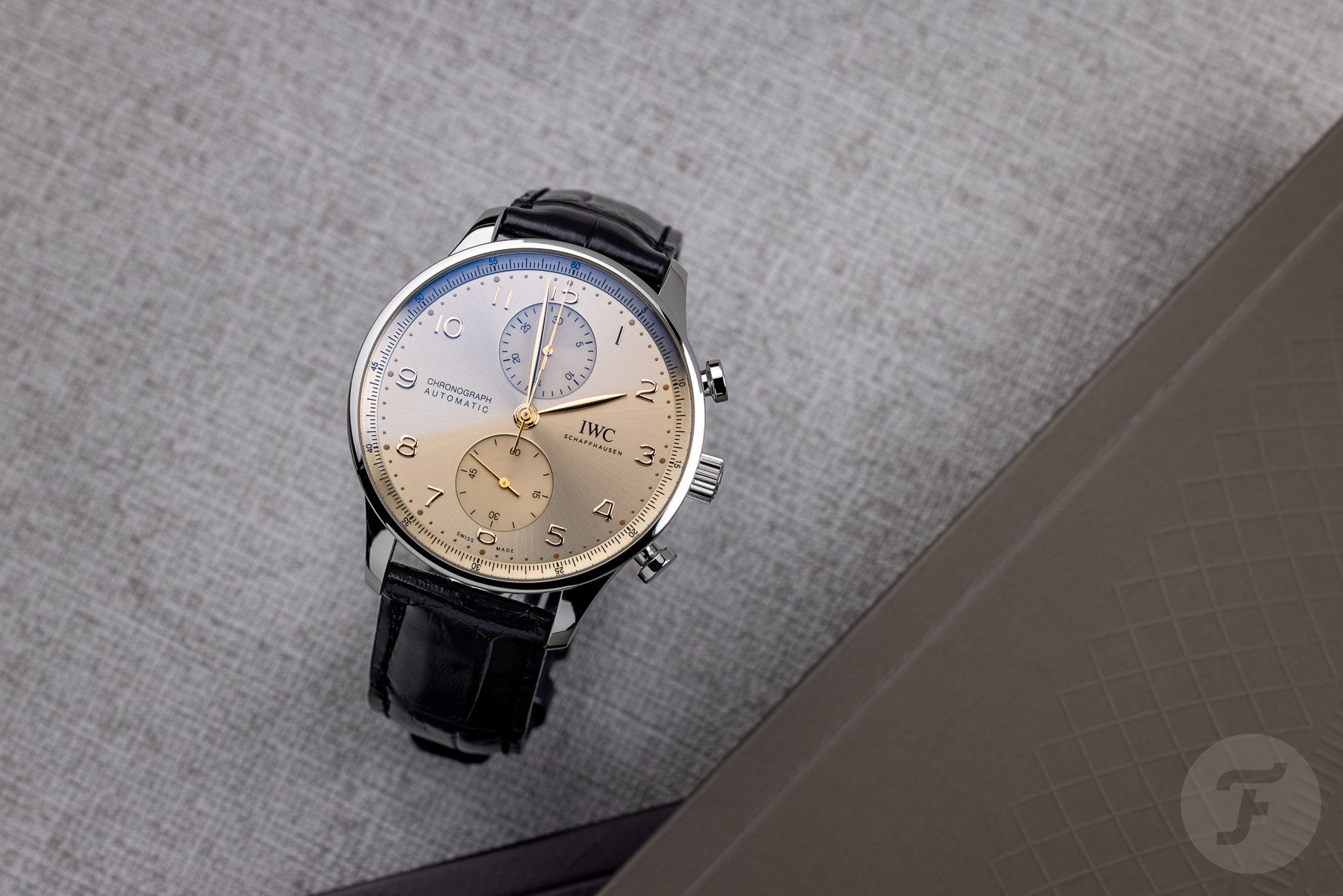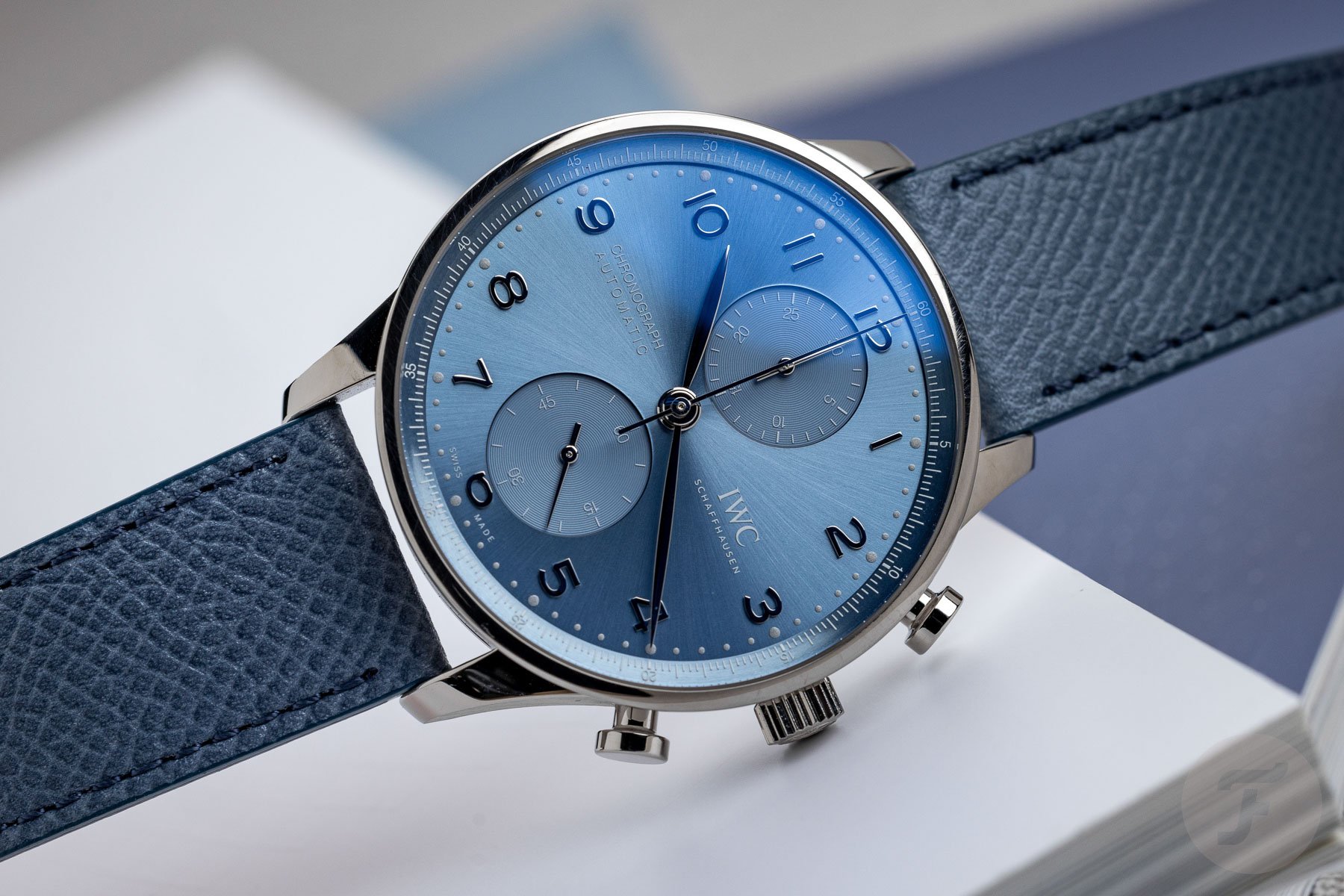The Refined And Reworked IWC Portugieser Automatic 42 — Plus New Dial Colors For The Portugieser Automatic 40 And Chronograph
You might have to look twice, but you’re looking at the updated IWC Portugieser Automatic 42. These models have a completely re-engineered case construction with a more slender side profile. The bezel-less watches feature double-domed box-style glass sapphire crystals for unobstructed views of the sunburst dials or the versions finished with 15 layers of transparent lacquer. Some of those dials are in the new nature-inspired colors Horizon Blue, Obsidian, and Dune. Selected Automatic 40 models show these new dial colors, just like three new versions of the Portugieser Chronograph.
If you’re wondering what evolution looks like in Schaffhausen, look no further than the new Portugieser Automatic 42 and 40. They still have a lot in common with the first Portugieser watches that date back to the late 1930s. The idea to create a wristwatch with chronometer precision by mounting a very accurate pocket watch movement inside proved to be a timeless concept. The large watch became an IWC icon that kept evolving. Every generation of Portugieser models is, in essence, the same. There’s a clean and simple case shape matched with a purist dial. This dial is always large and very prominent because there’s no bezel, and it bears applied Arabic numerals, leaf-shaped hands, and a 60-minute scale on the outside. But even a timeless classic needs the occasional update.
The slender evolution of the IWC Portugieser Automatic 42
So, what’s new about the Portugieser Automatic 42? Well, there’s a wider sapphire crystal on the back to showcase the twin-barrel 4Hz caliber 52011. This movement replaces the 52010 and has an improved escapement to offer better protection against magnetic fields. The Pellaton winding system is reinforced with virtually wear-free zirconium oxide ceramic components. The customary seven-day power reserve stays intact.
As you may know, the Portugieser Automatic 42 traditionally shows the power reserve indicator at 3 o’clock and small seconds at 9 o’clock. The new Portugieser Automatic 42 honors its direct ancestor; the original Portugieser Automatic (IW50001) from 2000, but in a slimmer and more slender way. Let’s start with the four steel versions, of course. There’s the Dune dial with gold-plated hands and gold appliques (IW501705/€14,000); a classic silver-plated dial with gold-plated hands and indexes (IW501701/€14,000); a silver-plated dial with blue hands and appliques (IW501702/€14,000); and a blue dial with rhodium-plated hands and appliques on a steel bracelet (IW501704/€15,000).
Precious metals and shapes
There’s also a white gold version with a so-called Horizon blue dial matched with rhodium-plated hands and indexes (IW501708/€28,000) and an iteration in a red gold case with an Obsidian black dial and gold-plated hands and indexes (IW501707/€27,000).
Now we (finally) get to the refined case shape. The objective was to create a visually lighter and more elegant case. And that’s why the new Portugieser Automatic 42 has a 42.4 × 13mm case that replaces the old 42.3 × 14.1mm case.
As I wrote before, this is what evolution looks like in Schaffhausen. What is bordering on revolutionary, though, is the upgraded water resistance, which went up from 3 bar to 5 bar.
Noble variations on the Portugieser Automatic 40 theme
The original Portugieser Automatic 40 (IW3583) stems from 2020. The watch is a smaller and slimmer alternative to the 42, and its looks hark back to the very first Portugieser, the IWC ref. 325 from 1939. There’s no new case or movement for the Automatic 40 in 2024. Inside the case still beats the caliber 82200 featuring zirconium oxide ceramic parts and the automatic Pellaton winding system to build up a 60-hour power reserve in the mainspring.
However, there are two new and noble variations on a proven theme. There’s the white gold case version with a bright Horizon blue dial and rhodium-plated hands and indexes (IW358402/€20,000) and a red gold version with an Obsidian black dial showing gold-plated hands and gold appliques (IW358401/€19,000). The white gold watch with the Horizon dial is part of a capsule collection, just like the other Portugieser debutants with that icy dial. The pink gold Portugieser Automatic 40 is a newcomer in the standard collection. Unfortunately, we didn’t have the latter at hand, so you will have to take a rain check on this novelty.
Three more colors for the Portugieser Chronograph
The Portugieser Chronograph, with its vertically designed sub-dials at 12 and 6 o’clock, has been in the collection since 1988 and is, if I’m not mistaken, the most successful IWC watch of all time. In my humble opinion, that’s completely understandable because the design is clean, timeless, and characteristic of the brand. The mix of classic elegance and a touch of sportiness just works. This year, there’s nothing new when it comes to case sizes. The Portugieser Chronograph has a trusted case size of 41 × 13.1mm that didn’t need an update. And the same goes for the automatic chronograph caliber 69355 outfitted with a column wheel.
The IW371626 (€21,000) shows a Horizon blue dial in combination with an 18-carat white gold case and a blue calfskin strap. The dial color is inspired by “the early afternoon sky when the sun bathes everything in a bright light.” There’s also a 44.4mm perpetual calendar version in the white gold and Horizon blue capsule collection, by the way, the IW503703 (€51,000), but we didn’t have that one in the office. The IW371625 (€19,900) comes in a red gold case and shows a lacquered Obsidian black dial. Finally, the third novelty, the steel IW371624 (€9,100), has a lacquered Dune dial is paired with gold-plated hands and gold indexes. In case you’re wondering, IWC says it “reflects the mood in the evening when the sun is about to set, and the night begins.”
To round things up neatly and completely, all new Portugieser models (except ref. IW501704) come on calfskin or alligator leather straps made by Santoni.
Do you like these new additions to the IWC Portugieser collection? If so, which one is your favorite? Let us know in the comments below.

